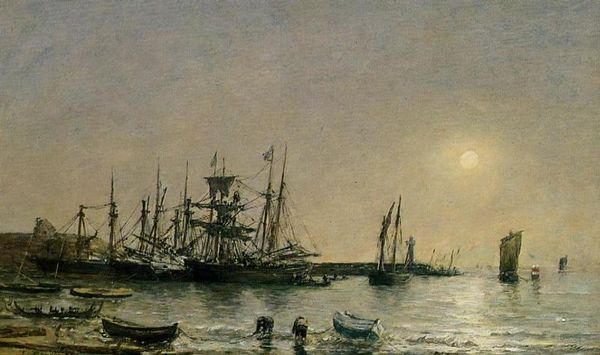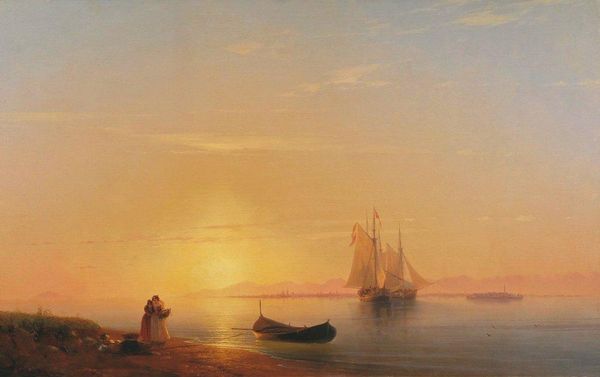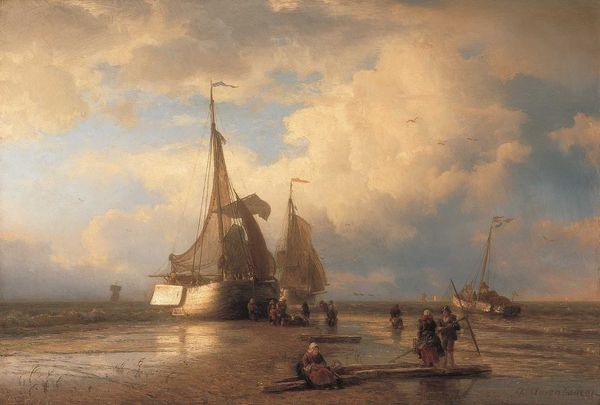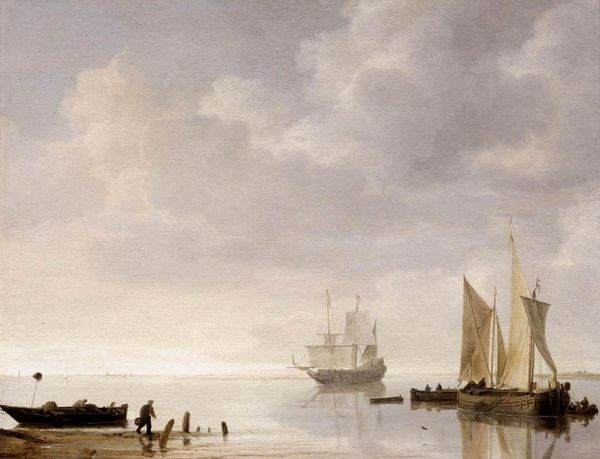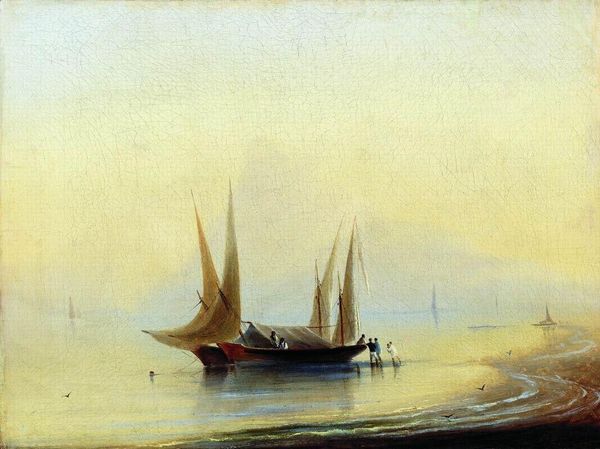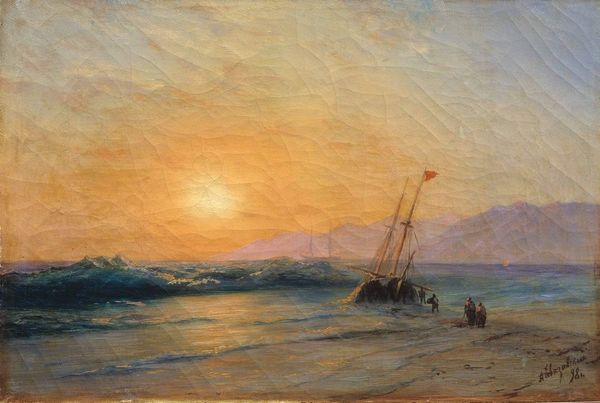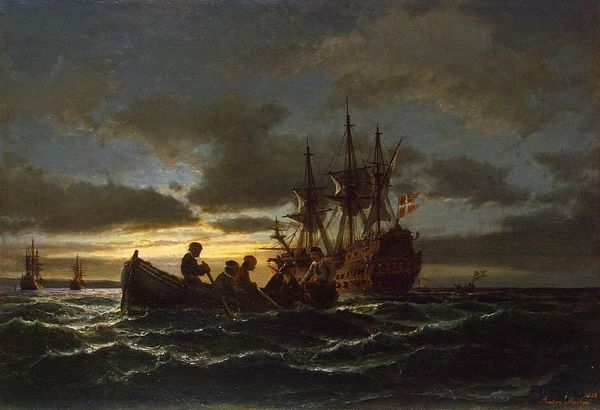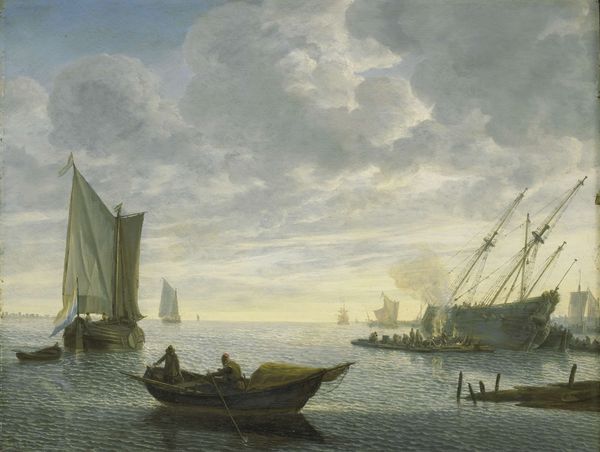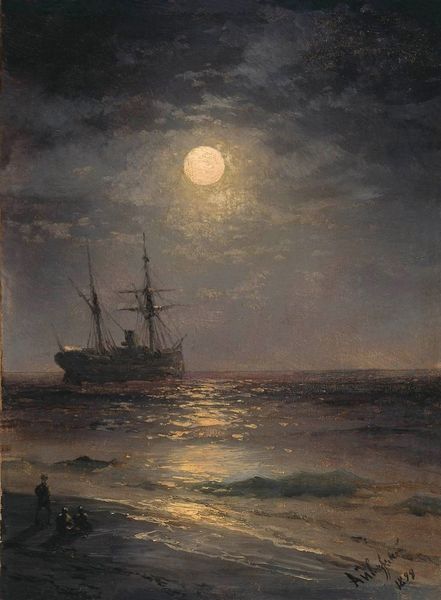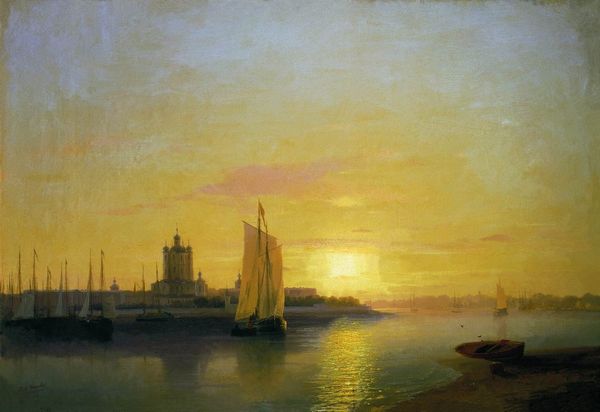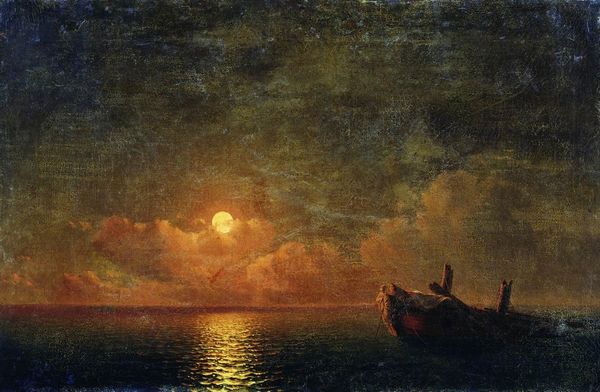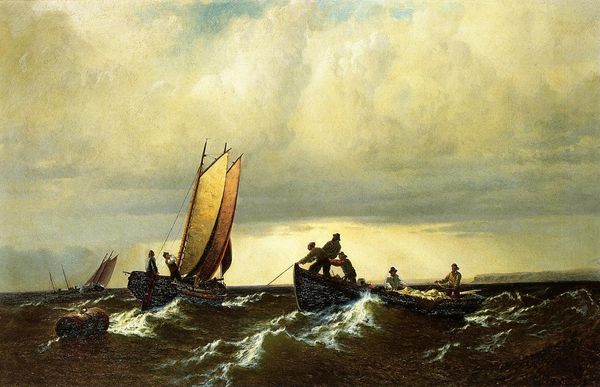
Copyright: Public domain
Editor: Hermann Ottomar Herzog's "Strand Bij Maanlicht, Scheveningen," painted in 1878 using oil paints, evokes a very tranquil scene. The luminous moon and gentle waves create a sense of peace. What stories do you imagine unfolding here? Curator: Ah, yes, I’m immediately transported. The moon, that big cheesy spotlight in the sky, bathes the scene in this almost theatrical light, don’t you think? It makes everything feel a bit dreamlike, slightly unreal. And that shoreline...it's not just sand and boats, it's a stage where ordinary lives play out under the cosmos’ watchful eye. You notice how tiny those figures are compared to the vastness of the sea and sky? Editor: I do. It almost makes them seem insignificant. Is Herzog trying to say something about humanity's place in the grand scheme of things? Curator: Perhaps. Or maybe he’s inviting us to consider the small dramas – the fishermen returning, families gathering – as being profoundly important in their own right. Those muted colors, they whisper of a fleeting moment, a story that will soon vanish with the tide. Do you get a sense of nostalgia from the work? I feel this lingering sense of beauty, just before it’s lost to darkness. Editor: I do now that you mention it! I initially saw tranquility, but now there's a melancholic undercurrent that wasn't immediately apparent. It’s interesting how the use of light transforms the emotional feel. Curator: Absolutely. Light isn’t just illumination, it's a narrator, a mood-setter. And in Herzog’s hands, it speaks volumes. This is romanticism painting the beauty of realism painting! Editor: I never thought of it that way. Now, looking at it, I find new layers of depth and a quiet emotional resonance. Curator: Exactly. It’s amazing how one’s perspective changes.
Comments
No comments
Be the first to comment and join the conversation on the ultimate creative platform.
